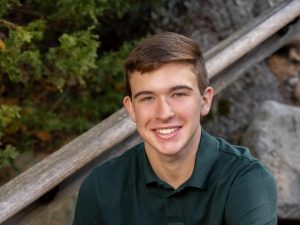Anti-Racist Efforts at WHS
April 29, 2021
Throughout the past years, communities nationwide have been examining their responses toward racism, and the Westborough High School community is no different. An important conversation has recently been sparked and continues to grow: How can Westborough High School prevent incidents of racism and make its community more safe and welcoming for students of color?
After questions emerged in Westborough regarding the school’s consequences for incidents of racism, students have come together in their feelings of anger and injustice to make an organized effort to eradicate racism in the Westborough School system. This group consists of current and former students as well as alumni who are creating solutions with new policies and anti-racist curriculum. The students involved who have consented to be named are Ved Shankavaram, Isabel Guimarães, Evelyn Toth, Emily Barbosa, Mai Lord, Bridget Lord, Kyla Wangechi, Shalini Singh, Nanayaa Dadzie, Izzy Washington, and Julia French.
One of the key issues these students have recognized is the lack of specific policy to address racism. In the WHS student handbook, there is a notice of nondiscrimination as well as a section called Discrimination and Sexual Harassment which reads “If the Westborough Public Schools finds that an individual has violated this policy, we will act promptly to eliminate the conduct, impose corrective action as necessary, including disciplinary action where appropriate.”
However, confidentiality rules prevent people from knowing the specific disciplinary actions the school takes against cases of racism, which have caused students to feel uncertain about whether these actions are sufficient.
“There needs to be information available to the public about how racist situations are handled and the consequences given to those who are involved in racist activity,” Washington says.
As a response, students are working to form new policies that will outline specific consequences for acts of discrimination. Their hope is that having specific consequences will deter acts of discrimination due to the repercussions associated with committing them.
“After calling this to the administration’s attention this has been set in motion. We will be available to lend ideas and support for the protocol they are devising,” French states.
Students also hope to have a balance between discipline and education, and have suggested ideas like writing an essay or participating in a training of some sort to help them see the error of their ways.
“Beyond [discipline], students have to know why their behavior is wrong, why it’s bad, why it hurts other people and why they shouldn’t do it,” Shankavaram adds.
A comment school districts often give after hearing about discrimination at their schools is that students should report these issues more often so they can be dealt with. But is the solution that simple? In a survey conducted in the Westborough Public Schools district in January, 47% of African American and 23% Hispanic students indicated they would not feel comfortable telling a staff member about witnessing or being bullied.
“Students do not feel comfortable reporting racism because there is such a performative attitude when it comes to Westborough and their actions against racism,” Washington states. “Speaking directly to administration, no matter how many surveys and emails you send out about racism and what an accepting environment you are, it means nothing if your students don’t even feel comfortable reporting incidents of racism.”
Because of this data, students are making the comfort of their peers who have faced discrimination a top priority. They have discussed this priority in meetings with administration, who have been quite receptive to their ideas.
“They do have ideas to make students more comfortable. We’re thinking of setting up a student committee where students can talk about these incidents with other students. It definitely decreases the tension that comes along with reporting, we feel,” Shankavaram states.
A crucial part of dismantling any systemic problem, though, is looking at what the root cause is. Students believe that much of the racism can be addressed through addressing the curriculum, especially in subjects like English and history.
“While I really love the history classes I have taken, they’re all very eurocentric and I think a curriculum that focused on the entire world would be better,” Shankavaram remarks.
Many students share this sentiment; they believe much of the current curriculum is focused on white people, wrongfully labeling some as heroes and sugarcoating or skipping ‘uncomfortable’ historical events.
“POC students deserve to hear and tell the truthful stories about how this country has treated them in the past,” Washington says.
To remedy this, students have brought their concern about the curruiculm to the administrators and are working to add new books, movies, and other forms of media written by people of color to the curriculum.
Shankavaram has recommended books to administration like Beloved by Toni Morrison, I Know Why the Caged Bird Sings by Maya Angelou, When Beale Street Talks and Giovanni’s Room by James Baldwin. Conversations about current racial inequities are also important to these students.
French shares, “If we can shed light on such important social issues, Westborough students will be better allies and more capable members of society: attuned to the world around them.”
Administration was contacted for a comment, and Principal Callaghan responded with a list of action steps the school is taking, for example, anti-discrimination summer reading, overhauling some of the curriculum, and staff trainings on implicit bias.
That list can be found at the bottom of this article. He also commented on the action students are taking in this email: “All the work students are doing individually and through clubs/activities on these very issues. Student voice in this has been wonderful– certainly we need more of that and welcome it.”
Though there is still a lot of work to be done, these students are pleased with the response from administrators they have received so far as well as the sense of community they have found in the group. They continue to meet with administration frequently to work toward a better school community.
The three students who were interviewed expressed their happiness at finding a community of like-minded, passionate people who work toward a common goal while amplifying the voices of members of color along the way.
“It’s an ongoing process and a very difficult issue with a lot of nuanced aspects to confront,” Shankavaram says. “But I’m really happy that we’re doing this and change is happening.”
If you have any comments, questions, or ideas you would like to voice to this group, please fill out the Google form here: https://forms.gle/ffSf8bqNLrMik77Y8.
Sources:
https://www.communityadvocate.com/2021/01/21/westborough-school-survey-racism/
List of action steps from Principal Callaghan:
Here are several of the highlights of WHS’ work (this is not a complete list) on enhancing our social inclusion efforts that began more than 3 years ago when WHS established the ‘Gender Equity and Social Inclusion’ Committee and began the process of changing mindsets and attitudes around inclusion and equity:
Curriculum & Classroom Resources
WHS Gender Equity & Social Inclusion Committee, began in 2017-2018 school year; comprised of staff at first and included students in 2019
English- pruned out several more traditional books and grafted in several contemporary novels by diverse authors
Social Studies- curriculum review; using even more diverse primary source documents
World Language curriculum overhaul with a focus on teaching about social emotional learning, equity and diversity
All departments- finding and implementing resources that allow for all students to see themselves in the content
“Say their Names”- A toolkit to help foster productive conversations about race and civil disobedience
Mykee Fowlin presentation to entire school, 2018
Schuyler Bailar presentation, 2019, 500 students and all staff
Staff Professional Development
Safe & Supportive Schools Commissions, 4.5 hours (3 parts), 2017-2019:
Schools that foster a safe, positive, healthy & inclusive whole-school learning environment that:enables students to develop positive relationships with adults and peers, regulate their emotions and behavior, achieve academic and non-academic success in school and maintain physical and psychological health and well-being; and integrates services and aligns initiatives that promote students’ behavioral health, including social and emotional learning, bullying prevention, trauma sensitivity, dropout prevention, truancy reduction, children’s mental health, foster care and homeless youth education, inclusion of students with disabilities, positive behavioral approaches that reduce suspensions and expulsions and other similar initiatives
Visions, Inc. 2.5 hour training on Implicit Bias (Part I of II), 2019:
VISIONS, Inc.’s training sessions and consultations seek to:• Deepen awareness regarding bias around race/ethnicity and other categories of historical exclusion at each of four levels (personal, interpersonal, institutional, and cultural).• Invite participants to deepen their experience of their own cultural identity as well as their own feelings and behaviors in cross-cultural interactions—within a safe, non-blaming learning environment that encourages people to take responsibility for their own attitudes and behaviors.• Help participants develop skills for addressing the attitudes and conditions (often unconscious and unintentional) that perpetuate disparities in inclusion, power, and access.• Provide initial tools and skill building to equip participants for DEI leadership within their organization.
Cultural Responsiveness and Equity Speciality Track- staff participated in webinars to provide a platform to discuss issues that are important to consider in the conversation on racism, inequity, and social justice.
In process now after getting a grant. Extends ideas of Vision Inc. Got put on hold when COVID hit. Now picking up pieces.
Cultural Proficiency workshop- 16 hour training, over 30 staff and administrators
Mental Health First Aid- 8 hour certification, over 75 staff trained
Trauma Informed Practices- 2 hour training all staff
Social Emotional Learning Integration in all classrooms- over 8 hours of training for all staff since 2019; created SEL Moments in 2021
“Working through the 2020-21 School Year with Mental Health and Equity in Mind”- 10 hour training for school counselors and administration
“Ready to Learn: Teacher Moves PD 2020”- This session begins by grounding educators in the core beliefs and values that underscore their teaching practice in preparation for learning and how to build equitable classrooms and employ trauma-informed strategies to prepare their students to learn under ongoing COVID19 conditions.
School Wide Theme of Empathy, 2019 & 2020
Signage in every classroom and around the building (and district) creating a welcoming atmosphere and explicit statements about acceptance. “All Families are Welcome Here”
student panel meetings with staff, monthly meetings since 2018
Book Clubs & Discussions (nearly 100 faculty and staff members involved in various department/social book groups)
WHS Summer Reading 2020 focus on equity, social justice, and resilience (some examples):
Stamped: Racism, Antiracism and You
The Gifts of Imperfection
Long Walk to Freedom: The Autobiography of Nelson Mandela
The Astonishing Color of After
How To Be An Antiracist by Ibram Kendi
So You Want To Talk About Race by Ijeoma Oluo
Don’t say Nothing by Jimilah Pitts
Planning underway for future work:
2021 Summer Reading will focus on areas of equity, race, diversity, empathy
(titles to include: We are not from here by Jenny Torres Sanchez, This is my America by Kim Johnson, We Are Not Free by Traci Chee, with possibility of author visits)
Student assemblies on the topics of anti-racism and inclusion
formation of Equity Committee that includes members of staff, student body, and community
Continue to explore and redevelop curriculum to bring in more literature by diverse authors
Implement the District’s Equity Strategic Plan
WHS Student Handbook revisions- Summer 2021
Remain focused and committed to the work we started in 2017 to move WHS to a more accepting, inclusive, and anti-racist school







